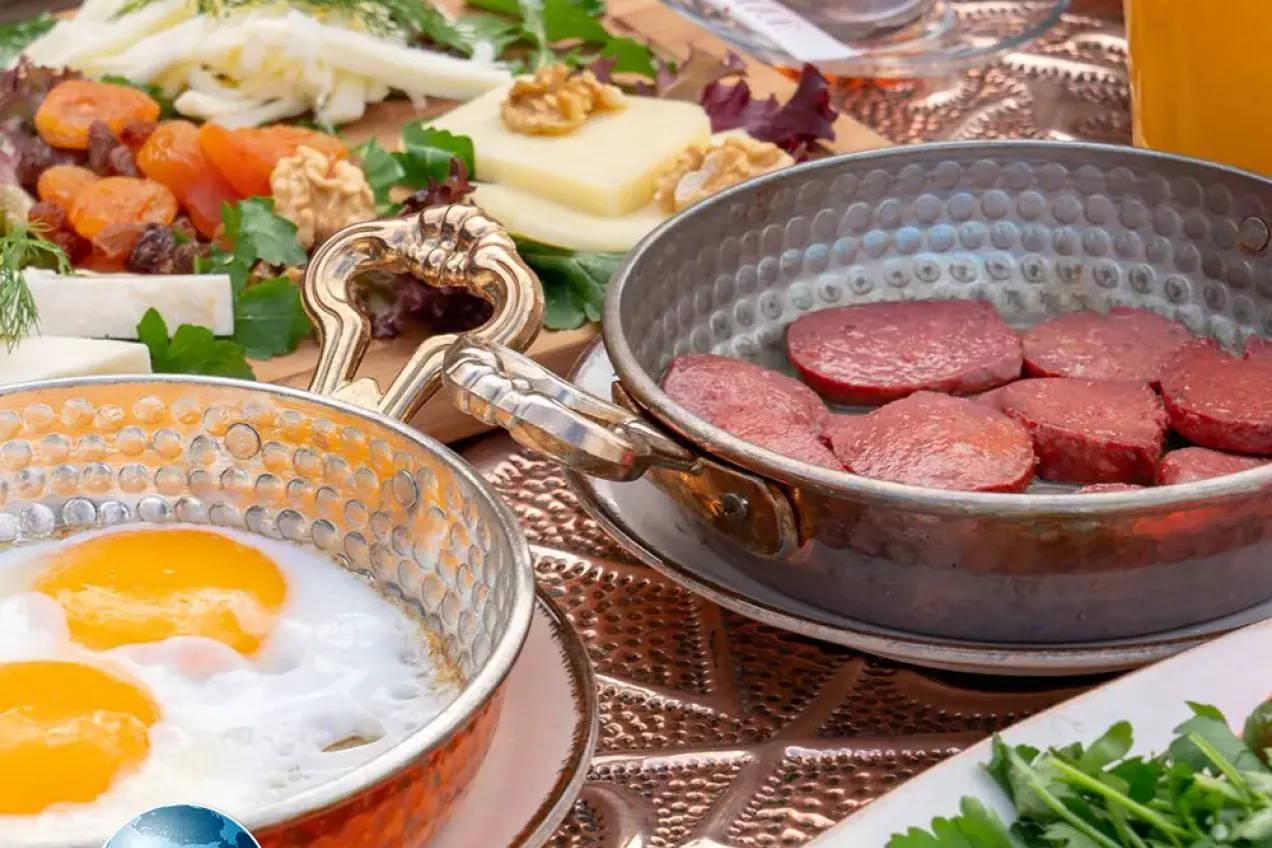Turkish Cuisine

Turkish Cuisine Recipes
Turkish cuisine includes many traditional food recipes, but one of the features of Turkish cuisine is its division into Turkish climatic zones. Some dishes such as eggplant, tomato, kebab and bread are available throughout Turkey, but how these foods are prepared varies from region to region depending on local preferences and additional ingredients. Turkey is divided into seven climate zones, each of which contributes to Turkish cuisine.
Istanbul - the Heart of Turkish Cuisine
In Istanbul, the culture of Europe and Asia mixes, in this place you can enjoy any Turkish dish and international dishes borrowed from other cultures. This place is also famous for Ottoman cuisine, including fried, stuffed eggplants, kebabs, Turkish delight, fried or stuffed mussels, balyk-ekmek and others. On the southern coast of the Sea of Marmara is the city of Bursa, which is famous for its special kebab of lamb, beef or chicken - doner kebab. Döner kebab is a Turkish dish prepared on a spit, on which layers of meat are strung. Then the fried meat is cut off the spit into thin slices and served on pita bread with yogurt and tomato sauce.
Turkish Cuisine in the Aegean Region
The Aegean region is famous for its seafood dishes, and dishes are also prepared with oranges, artichokes, figs and olives. In Antalya, you can taste the famous kebab cooked on a spit in a clay oven - tandoor kebab, as well as lamb ribs stuffed with nuts, minced meat with rice and vegetables. This city is also famous for its jams, which are made from oranges, rose petals, cherries, apricots, watermelons, carrots, pumpkins and even eggplants. Kebabs in Antalya are spicier than in other regions of Turkey, here the Arab influence of neighboring Syria was reflected.
Turkish Cuisine Recipes in Central Antalya
Central Antalya, which is located on the northern coast of the Mediterranean Sea, prepares pasta, bread, pastries. Especially popular are gozleme - puffs made from filo dough stuffed with spinach, onions, cheese or other fillings. Also in this region they prepare such a dish as rastirma - products stuffed with minced meat. These include manti, pasta, vegetables, lamb or beef are also stuffed and served with yogurt and garlic sauce. In the southeast of Anatolia, the Syrian influence on the recipes of Turkish cuisine is very strong. Here the food is very spicy, bulgur is replaced with rice, which is served along with the main dishes. There are also typical Arabic dishes - hummus, babagkhanush (baked eggplant puree with yogurt and garlic) and mihimmara.
Turkish Dishes of Eastern Anatolia
Eastern Anatolia has been home to the Kurdish people for centuries, and the national dishes there are bulgur dumplings and other Kurdish dishes. Van is located between Lake Vane and the Iranian border, this city is famous for its cheese, which is mixed with finely chopped grass. Also in the culinary recipes of local residents there are many dishes from eggs, for example, poached eggs with yogurt - a particularly popular Turkish dish. In Malatya there is an abundance of apricots, from which many sweets are prepared.
Eastern Anatolia Recipes
The city of Gaziantep in eastern Anatolia is home to an abundance of pistachios, which are part of the world-famous baklava dish. Pistachios are included in many local dishes, including pistachio spicy kebab. Along the Black Sea coast, anchovies are very popular, so much so that even desserts are made from them. Hamsi tatlisi is a sweet pastry made from anchovies, flour, eggs, fruits. Anchovies are also used to prepare an equally popular Turkish dish - pilaf with anchovies. They also bake delicious cornbread in this area.
Traditional Turkish Cuisine
In many villages, the Turkish feast takes place at a low table called a sofra. Cushions or seating mats are laid out around the table. Traditional Turkish dishes https://kashevar.com/en/recipes/turkey are served on a tray, placed in the center of the table and everyone scoops up the food with lavash - freshly baked lavash is the national bread of Turkish cuisine. It is served first and can be used to quench a little hunger while the main course is served. Lavash is also used to soak up the remnants of a delicious sauce after the main course. Dinner has a special place. During dinner, people not only enjoy the national Turkish cuisine, but also talk. After the meal, they can also chat while sipping tea or coffee and enjoying fresh fruit.